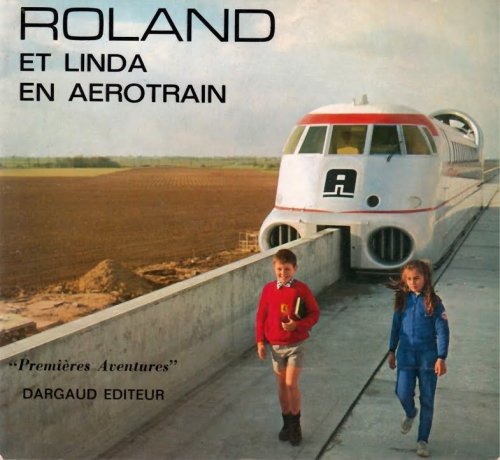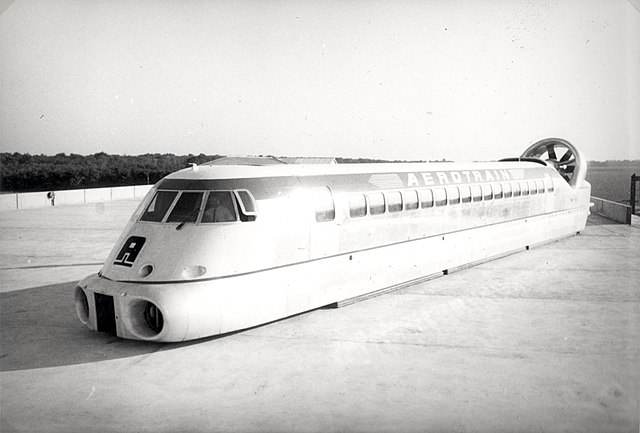i have doubt if Aerotrain would have be cheaper compare to TGV
Aerotrain change regular in concept, the most know is 180 250 with huge fan in back
The last proposal had to use linear motors in tracks similar to German Transrapid
This would have made new Tracks very expensive build in 1970s compare to the cheaper 180 track.
And Aerotrain 180 250 and
TurboTrain à Grande Vitesse had one big issue that in 1973 became their dead.
both used thirsty gas turbine resulting in high operation cost and after 1973 it became out of question to use them.
TurboTrain à Grande Vitesse became electric power TGV, while Aerotrain program died with Jean Bertin in 1975.
Some people blame the President Giscard d'Estaing who formally annulled the contract for the Aérotrain Cergy-La Défense line.
but that is 24 km line today part of RER A line of Regional Express Network
Original was proposed Paris - Orléans with 120 km would make more sense,
But would be economic ?
biggest issue with Aerotrain 180 250 is limited seating and small size with 80 seats
compare to TGV train with two power cars and eight carriages, with 345 seats.
Here the Ticket sales vs used Trains on track is important factor.
The TVG is here superior to Aerotrain...
On long-distance with speed of 430 km/h could Aerotrain be better as TVG with 279 km/h
but now Aerotrain face Airliners as competitions...




